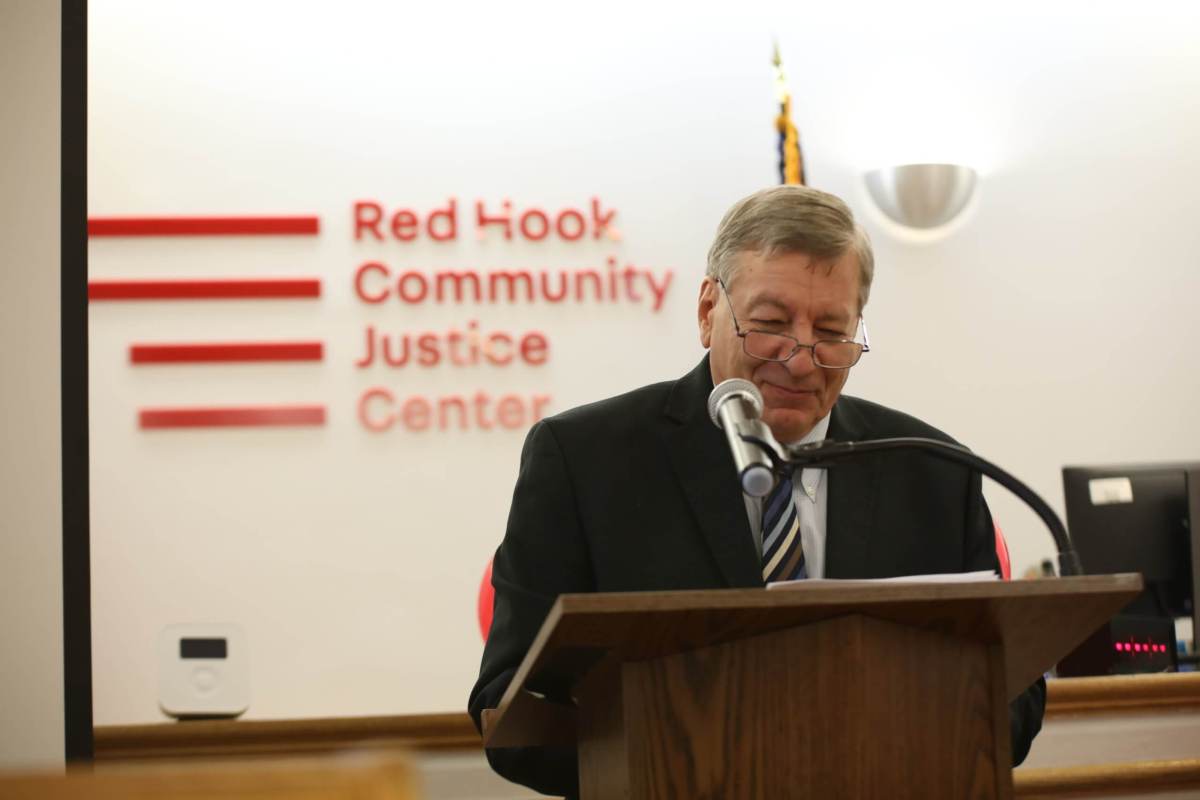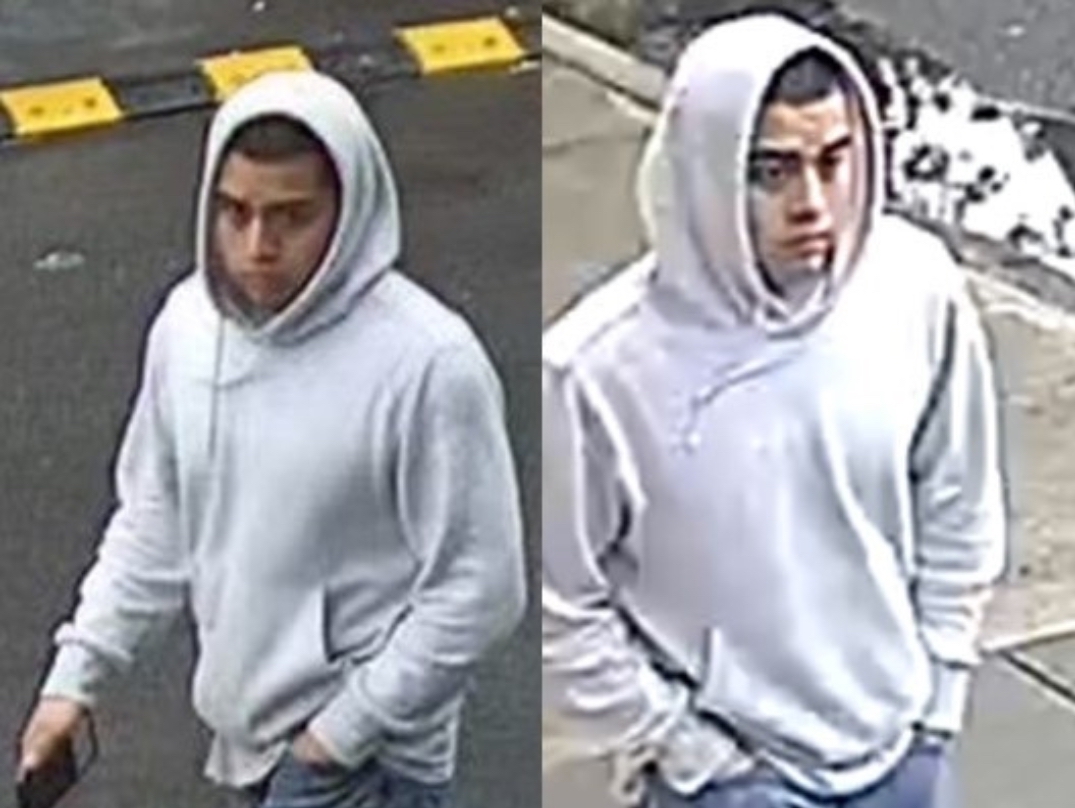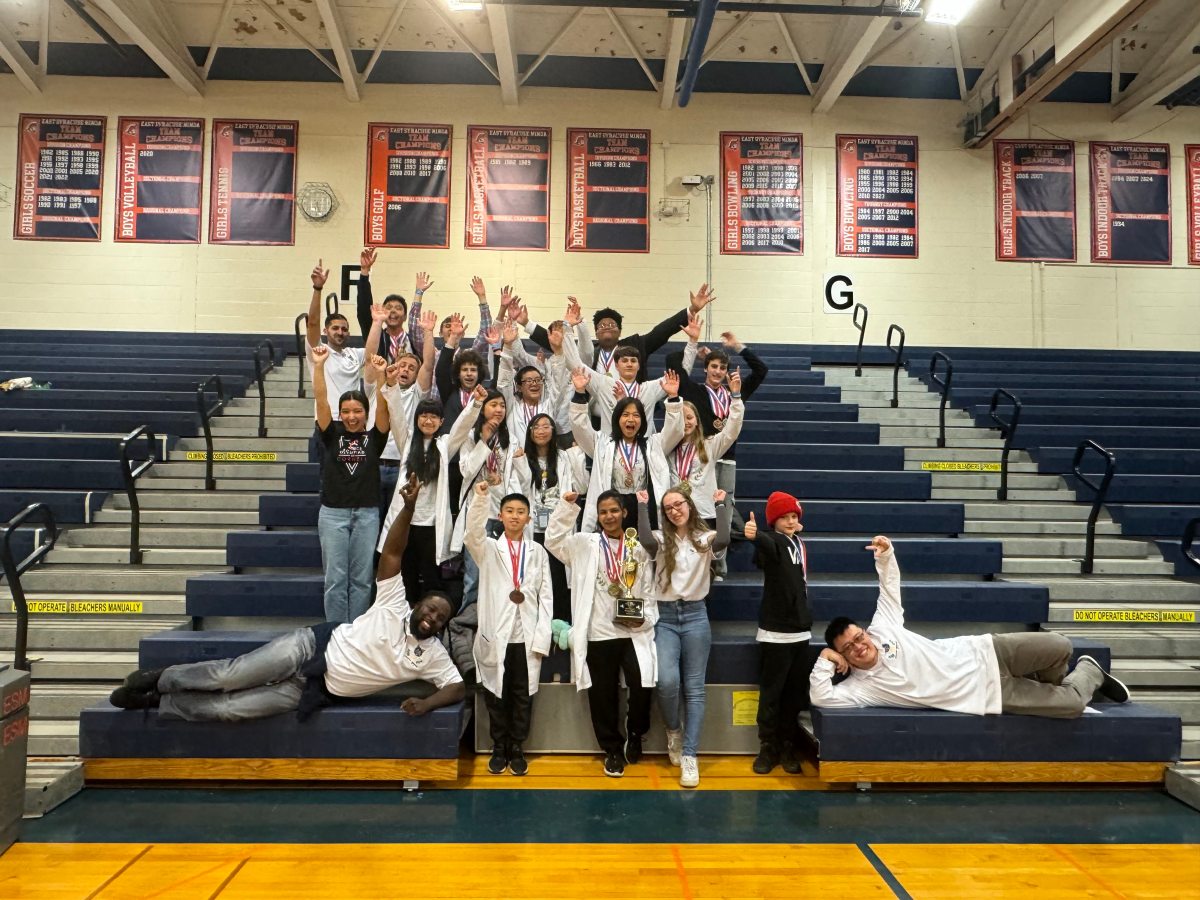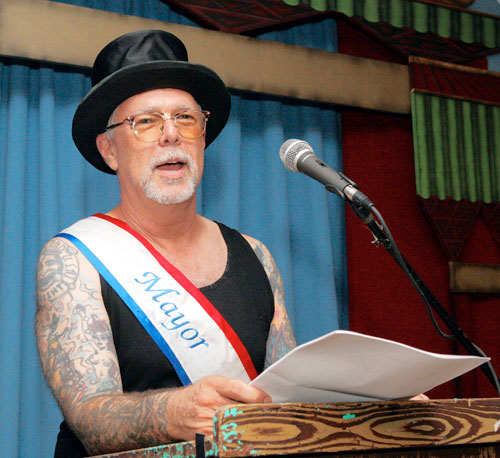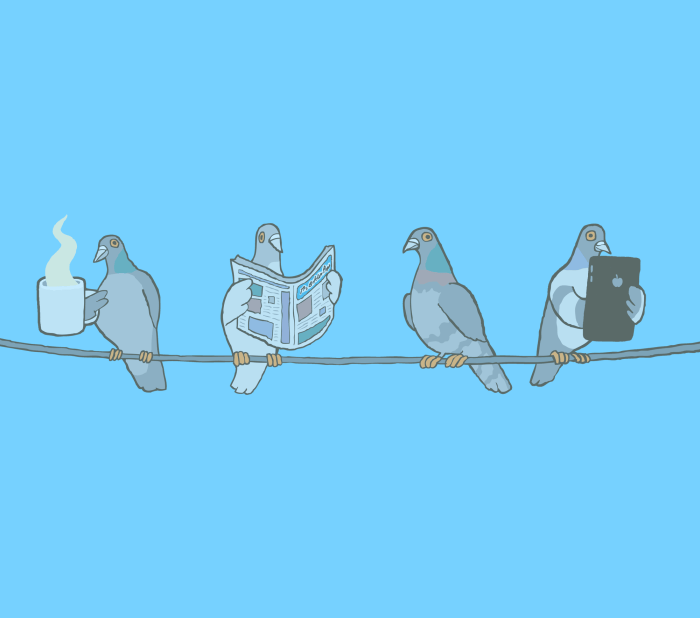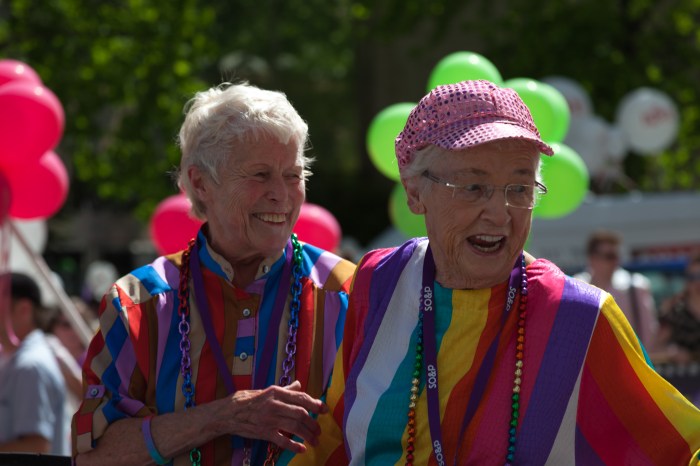On Oct. 26, Judge Alex M. Calabrese entered the small courtroom at the Red Hook Community Justice Center and took a seat in front of the bar one last time.
But the judge, who had presided over the court for 22 years, wasn’t there to hear a case, or counsel a client. He was there to be celebrated — after two decades leading the revolutionary community justice center, Calabrese retired on Oct. 14. Two weeks later, dozens of people — clients, lawyers, elected officials and more — gathered at the Visitation Place courthouse to bid him a proper farewell.
Two decades of leadership at the Red Hook Community Justice Center
Calabrese — a warm and upbeat presence in the courtroom — has been with the Red Hook Community Justice Center since it opened in 2000. At the time, the judge recalled at his farewell ceremony, Red Hook was a “tough place.”
In 1992, a beloved school principal, Patrick Daly, was shot and killed near his Sullivan Street school as he searched for a young student who had left the school earlier that day. Six months later, three teenagers — two of whom had once been Daly’s students — were convicted of his murder.
The shocking death moved then-Chief Judge Judith S. Kaye and Brooklyn District Attorney Charles J. Hynes to open a different kind of court, one inspired by the Midtown Community Court in Manhattan. The Red Hook Community Justice Center, the first of its kind in Brooklyn, would oversee low-level offenses as well as family and housing cases.
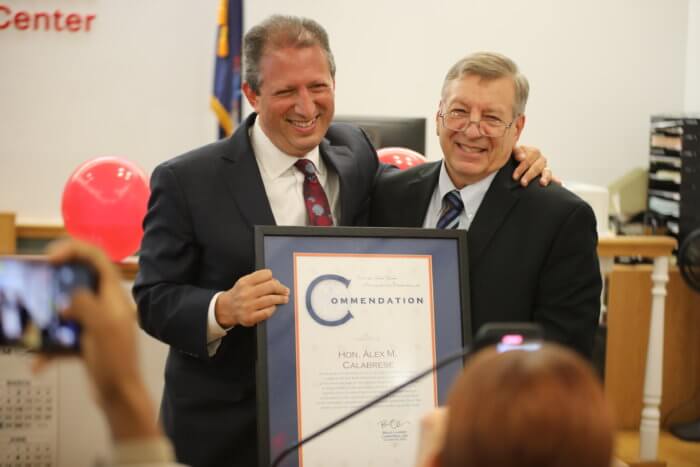
Critically, the court, which was created in partnership with the Center for Court Innovation, would work to replace the “broken windows” policing of the time in favor of a more comprehensive approach. In the courtroom, the judge would try to get to the root of crime on an individual basis, and would send perpetrators to rehab, or counseling, or to receive medical care, rather than banging the gavel on a prison sentence and calling it a day.
There would be just one judge to oversee all cases — and Kaye and Hynes wanted Calabrese. At the time, the judge was working in criminal court in Downtown Brooklyn.
“I was downtown for about two years sitting every day in the arraignment part of [the court] and I really was seeing the same people every two or three months,” he told Brooklyn Paper. “I could almost pick out their next arrest, you know when it’s coming. And I’m thinking, ‘We’re just not getting to the underlying issue that brought the person to court.’”
Though he didn’t know it, as he sent perpetrators to take part in programs that would really help them out of the cycle of arrest, arraignment, and jail, Calabrese was already embodying the approach of the Red Hook Community Justice Center. He took the job and spearheaded the development of a revolutionary way of seeing justice.
A unique touch, and real results
When Pauline Nevins appeared in front of Calabrese, she was “deep into the world of addiction,” she said at the ceremony.
“For about 15 years I was just getting high, in and out of jail, it was so bad I couldn’t fathom not living like that,” she told Brooklyn Paper. “I used to run around in Sunset Park but for whatever reason, when I got locked up, I would come in here.”
She would be let off with instructions to return to court but would skip out on her appointments, she said. Until, one day, Calabrese asked if she wanted to go to rehab.
“Initially I was just like, yeah, it’s cold, so that seems like a good idea,” Nevins said. “However, while I was there, something changed. I followed up with aftercare, I was mandated for six months I had to come here every month to check in, I did wonderful.”
Eventually, she went back to school, and now works in addiction counseling. Years ago, she spoke about her experiences at a Center for Court Innovations anniversary event at the Brooklyn Museum. During the ceremony honoring Calabrese, Nevins said if she could tell herself ten years ago that she’d be speaking at a retirement ceremony for a judge, she would have laughed at herself.
From the beginning of her time appearing at the Red Hook Community Justice Center, she knew Calabrese and the staff were different — where officers at Central Booking had mocked her, the people at the Justice Center treated her kindly, and with respect. It took some time until Nevins was ready to accept the help she needed — but, in rehab, she saw people happy in recovery.
“I was so far down the rabbit hole that I didn’t even see a light at the end of the tunnel,” Nevins said. “I was going to get my mom’s phone number tattooed on me for when I was found. That’s how screwed up my thinking was. I probably wouldn’t be standing here. And [Calabrese] would never take credit for any of that, but, like I said, he opened the doors, provided an opportunity for me.”
Nevins’ story – and the stories of others who had once stood in front of Calabrese and on Wednesday stood beside him, celebrating him — are more than anecdotes.
A 2013 evaluation by the National Center for State Courts found that the center sent fewer people to jail than the Downtown Brooklyn courts, and managed to handle juvenile cases without prosecution. Adults whose cases went through the Justice Center were less likely to be rearrested, and, overall, the study found that the court proved the value of community courts.
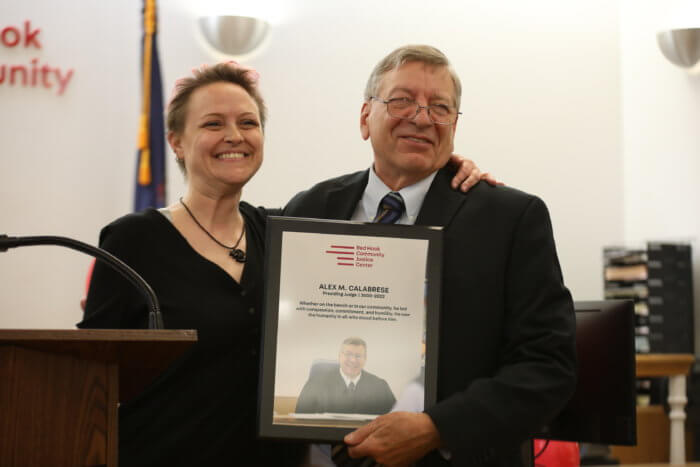
The humble Red Hook Community Justice Center has been held up as a model for court innovation throughout the U.S. and internationally in New Zealand, England, Ireland, and elsewhere.
The judge has always been a “good and decent person, and a friend to everyone,” said Patrick Dwyer, who has known Calabrese for 55 years — since they were both students at Loyola School in Manhattan.
Of course, Calabrese can’t take credit for all of the Justice Center’s successes — the judge thanked the Center’s attorneys, clerks, and volunteers for their hard work in making the court a success, and added that the support of the local police departments, elected officials, and the Brooklyn District Attorney had been critical.
As for his own ideology, Calabrese credits his mentor, former judge and lawyer Leslie Crocker Snyder.
“These were the years in New York City when every drug gang owned a street corner and territorial disputes were resolved by gunfire,” he said during his speech on Wednesday. “New York City would not have recovered from those drug gang years without a judge willing to hear those cases, and most judges were not. Judge Snyder did justice while under daily threat to herself and her family, she is a true American hero.”
Retirement, and the next steps for Calabrese and the Justice Center
Calabrese is turning 70 next spring and would have retired then, he told Brooklyn Paper, but decided to step out just a little early after his wife — who his children thought would work forever — decided to retire herself.
He loves his job, Calabrese said, so it wasn’t an easy decision, but it’s time to move on. He’s proud of his legacy at the court, and was shocked by the recognition he got at the ceremony — the courtroom was packed and supporters were overflowing into the hallway. Among those in attendance were Brooklyn District Attorney Eric Gonzalez, New York City Comptroller Brad Lander, and U.S. Rep. Nydia Velázquez.
Mayor Eric Adams declared Oct. 26, 2022, “The Honorable Judge Calabrese Day.” Nevins presented him with a plaque that will hang in the Justice Center’s hall in his honor. And, perhaps best of all, the Center for Court Innovations is sponsoring the Judge Alex M. Calabrese Scholarship fund, which will present one graduate of the center’s GED program with $1,000 to support their postgrad endeavors.
Calabrese has always been “one of the biggest supporters,” of the GED program, said Amanda Berman, regional program director at the Center for Court Innovation, holding graduation ceremonies in the courtroom and holding pizza parties for graduates.
Judge Sharen Hudson will be taking over at the Justice Center, and with her leadership — combined with the hard work of all the other people at the organization — it will be in good hands, Calabrese said.
“The Red Hook Community Justice Center plays a special role in the community and in the national movement to make the justice system more equitable and responsive to community concerns,” Hudson said in a statement. “I’m honored to be able to join the Red Hook team and contribute to the transformative work that occurs here.”
Calabrese’s retirement certainly doesn’t mark the end of his involvement with the center – in fact, the judge was planning to return to Visitation Place on Friday to welcome a delegation of visitors from the Netherlands. But he has plans for justice reform beyond the courtroom.
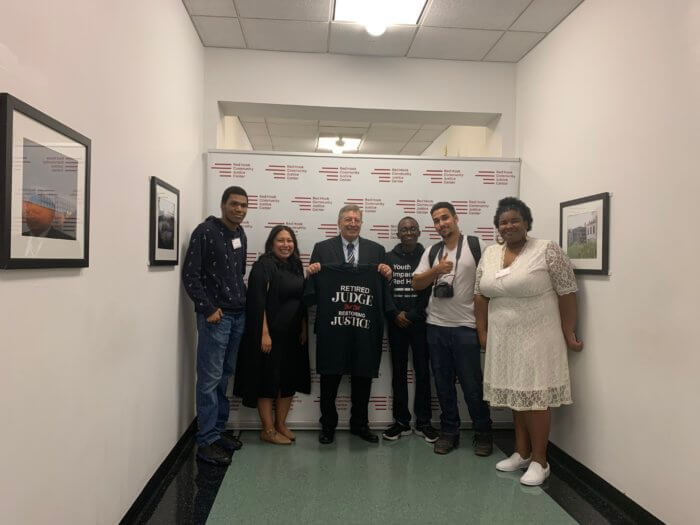
He hopes to work Chauncey Parker, deputy commissioner for community partnerships with the New York City Police Department, to get more feedback from the Red Hook community about the role they want the police to play in their lives.
“I really want to get the voice of youth and what they role they see for the police and the community,” he said. “I think unless communities have some say in that role … I think if it just happens naturally, there’s going to be issues. The more you can have some conversations like that, the less chance there is for either side to be expecting more, or overstepping.”
Next month, he’ll take part in a virtual international community court conference – having already successfully spread the community court model throughout the world, Calabrese was looking forward to speaking with even more people— sometimes, he said, half-jokingly, judges will only listen to other judges.
The Red Hook Community Justice Center under Calabrese’s leadership was “truly different,” Nevins said, because it asked why people were breaking the law or hurting themselves or others.
“I’m not a bad person — I did bad things, because I was addicted, but most people don’t wake up like, ‘Oh, I’m going to commit a crime today,” she said. “So the whole addressing of the underlying issue is so important. And being treated like a person.”
In other courtrooms, Nevins said, it was like going through a factory.
“What he created, you know, if this model is being used in other countries around the world, it’s not going to stop just because he’s retiring,” she said. “I’m sure they’re sad to see him go, but he’s earned it.”


